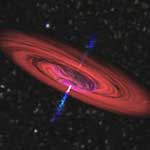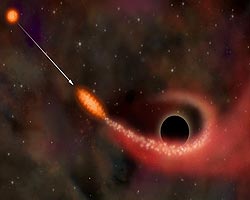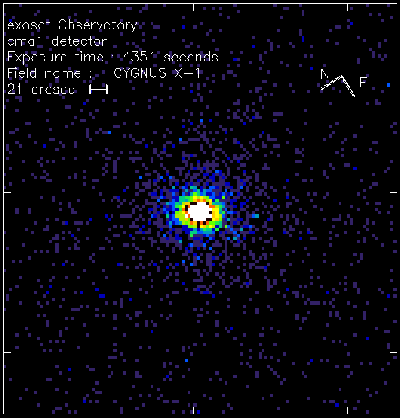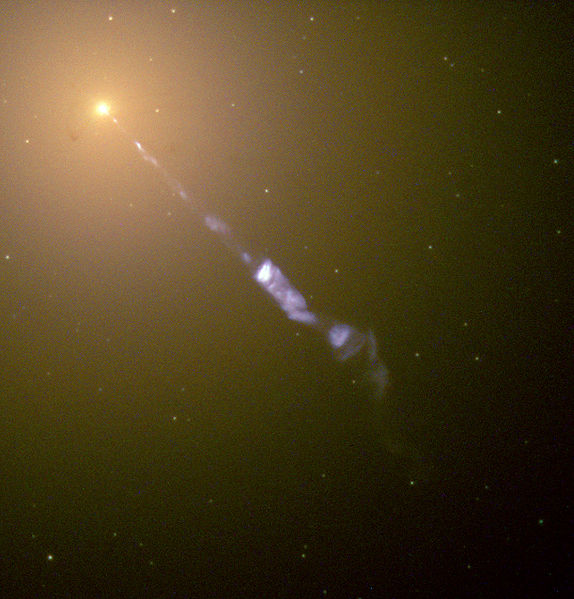After a star explodes in a supernova explosion, only its core remains. What happens next depends on the mass of this core. If the core of the remnant is about 50 solar masses then nothing can stop it collapsing. When it collapses, it becomes denser and denser, gaining a gravitational field so strong that not even light can escape. This is a black hole.
Every object in the universe bends space around it. This theory was first brought forward by Albert Einstein and has since been proven. Think of a big ball on a trampoline. The plastic bends around the ball. If you roll a smaller ball into where the plastic bends, the path of it also bends. The same happens with the objects in the Universe.
The denser the object the more space bends. A black hole is so dense that space bends to a point that an object that falls into the region of space where it curves (called the event horizon), would have to travel faster than the speed of light to escape: nothing can travel faster than the speed of light, hence, not even light can escape.
How do we see a black hole? We can't but we can see the effects that it has around it. For example, if we viewed a galaxy that is far away, and somewhere between the galaxy and us there is a black hole, the light travelling from the galaxy would bend drastically around it causing the galaxy to appear distorted. This is called gravitational lensing.
As well as this, if a black hole is near another star, it can start to pull material off. This forms a disk around the black hole that heats up due to friction to temperatures of up to 100 million °C! This disk can also emit X-Rays. An example of such a black hole is Cygnus X-1 which lies about 6000 light years away.





